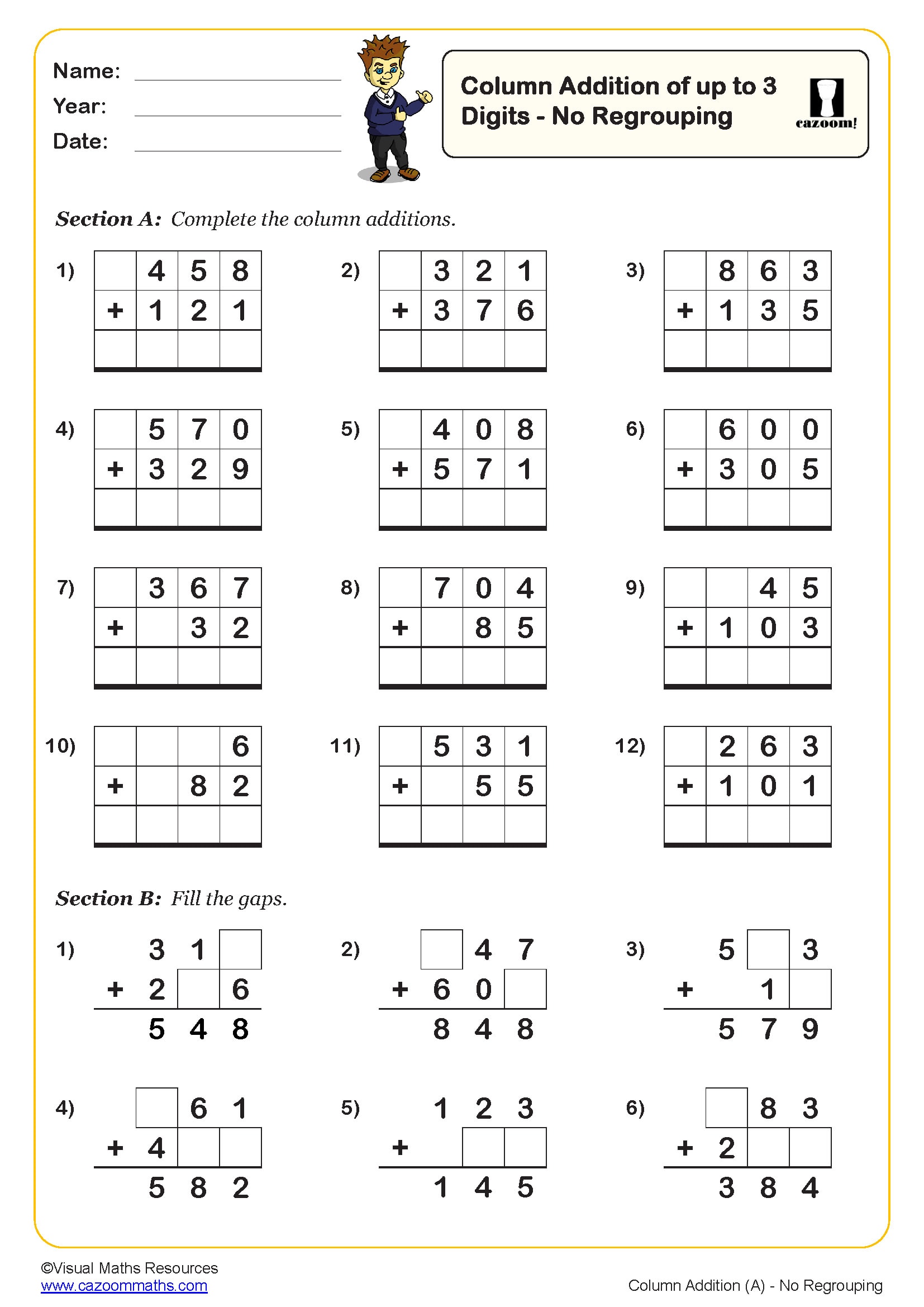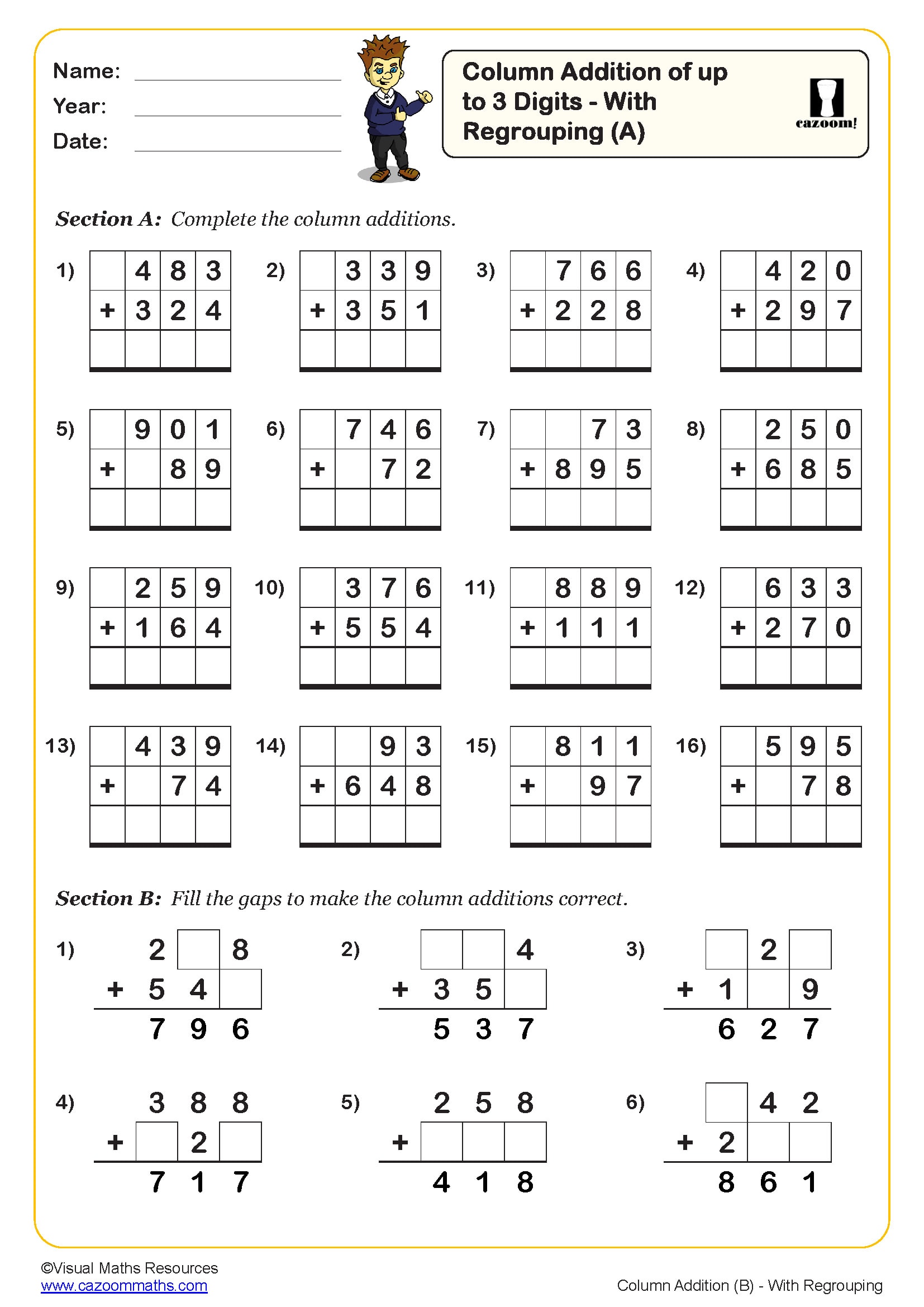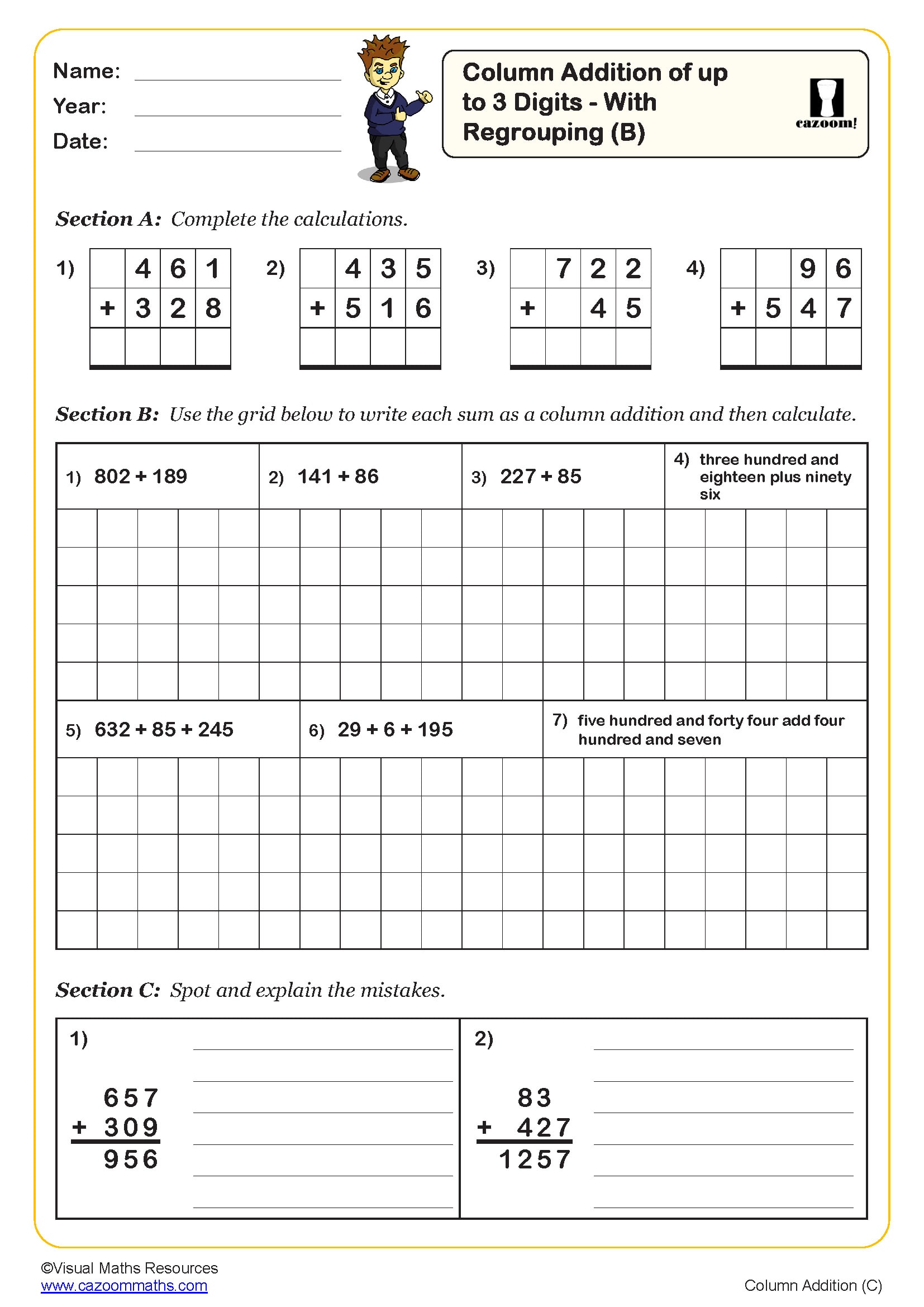Year 3 Written Methods for Addition
Download Year 3 Addition Worksheets PDF with Step-by-Step Answer Keys
Quality written method resources are surprisingly hard to find. We have solved this problem with our comprehensive Year 3 addition and subtraction worksheets PDF collection. Each worksheet is created in ready-to-use, printable PDF format and targets specific skills like column addition and expanded written method addition. The detailed solutions show every step clearly. Teachers love how these resources make marking quick and help students understand their mistakes.
What Addition Methods Year 3 Skills Do These Worksheets Teach?
With our KS2 addition resources, your primary school students start with two-digit column addition before tackling three-digit problems. The collection includes adding and subtracting money year 3 activities, word problems, and place value practice. Popular features include visual charts, clear method demonstrations, and real-world contexts. Each worksheet builds confidence while developing crucial mathematical thinking skills.
Why Year 3 Addition Worksheets Boost Student Confidence and SATs Results
Regular practice with these addition methods, Year 3 resources, strengthens number sense significantly. The structured approach prepares students for KS2 assessments naturally. These worksheets support the important transition from concrete manipulatives to abstract mathematical thinking.
• Build systematic problem-solving approaches and mathematical reasoning
• Develop accurate calculation skills for complex multi-digit problems
• Strengthen place value understanding through structured column work
• Prepare effectively for KS2 SATs and ongoing mathematical assessments
• Support transition from manipulatives to abstract written methods
Where Do Year 3 Students Use Written Addition Skills in Real Life?
Written addition appears everywhere in daily life. Shopping trips require quick calculations. Budgeting pocket money needs accurate adding. Science experiments involve measuring totals. Even art projects require material calculations. It's genuinely satisfying when students spot these methods helping them solve real problems independently.
• Shopping and money management calculations in practical situations
• Science experiments require accurate measurement, additions, and data recording
• Planning and budgeting for school trips, events, and personal projects
• Art and design projects involving material quantities and cost calculations
• Sports scoring, timing calculations, and team statistics analysis
• Geography and history lessons require population and timeline calculations


